
For those of you who’ve rebuilt and
fixed the 4spd automatic transmissions, this one’s for you. I’m fairly adept at
wrenching and fixing things as they should be, but this puzzler has me stumped.
And, after removing the transmission and replacing all the front seals, now the
problem is worse! I know, sounds like operator error to me too….
Searching the forums I found that Heinrich had essentially the same symptoms:
http://forums.rennlist.com/rennforums/928-forum/546708-4spd-automatic-transmission-leak-big-at-torque-converter.html
which turned out to be the front pump gasket damaged during installation.
Here's a pic from Heinrich's thread:

I guess this post is part ‘public
service announcement’ and part ‘what the heck’… I’m not pretending to be an
expert and I’m certainly not the documentarian Dwane is (you rock dude!); but
this was quite the challenge and I’m hoping this post will be one-stop-shopping
to help others trouble shoot the front end of the AT. It was bewildering for me
at first but after taking the time to study what was going on it began to make
sense and ultimately the job is very do-able… with practice (which it looks like
I’ll get more of). Also, Big UP to everyone here – I wouldn’t have been able to
do this without some awesome write-ups (Tony, Dwayne, & others – say where’s
Steve Cattaneo these days? – and Mr. Merlin) on this site and the amazing amount
of knowledge here. This community alone makes me want to keep this car forever
because I know an answer isn’t too far away.
Also, after reading other posts about cars catching on fire with leaky ATF
around hot exhaust, I consider this a HAZARDOUS condition – NOT drivable, NOT
safe. I’ve started my car when warm only to have a HUGE cloud of smoke pour from
underneath as ATF sprays on exhaust shields and parts. I’m a dad, I’m not
interested in being charred before my time. And, I’m thinking other folks are
running into this issue more as the cars age and running the other way…. So
here’s the scoop to help demystify what’s going on – everyone please lend your
additional $.02.
The Car: 83s with 117k original miles, I’ve had the car almost 2 years, driven
it maybe a total of 500 miles. (Yeah, that IS a problem…) Transmission was
leaking from the front grate (torque converter housing) just a little bit (like
it was low on fluid and taking air in) when I first got it, did a new trans
gasket, filter and fluid change to see if it might help. Torqued those pan bolts
(7 ft lbs is barely more than hand tightened) – no difference. Next, thought it
might be the front pump gasket/seal and/or the torque converter seal which means
pull the transmission so I thought I’d have a go at that.
Initial Symptoms: dripping leak in Park or Neutral from front grate TC cover.
Leak slowed when in Drive or Reverse (observed while car was running w/ P-Brake
on, flat and level surface). Trans level per spec (and I’m expert at this now…)
After removing transmission and replacing seals at front (TC seal, pump housing
gasket, main pump seal) the transmission practically POURS ATF when in Neutral
and Park and reduces flow by 50% when in gear (Reverse or Drive), still
dripping. When I start the car and the TC fills up I lose about 8oz of foamy
fluid in about 2 minutes!
Probable Causes (any others you all can think of?):
- Main Pump Gasket wrinkled / torn (Heinrich’s plight in the post above)
- Damaged TC O-ring (nicked or torn) from installing TC again
Scored / damaged / worn TC snout or bushing in main pump (replace both…) I
didn’t check these for wear tolerances as I’ve never seen any post or
information on checking these – not in the WSM either… Does anyone know of any
specs for such stuff?
- Low ATF level (wishful thinking…)
That last one has been curious and accounted for in other posts. Apparently,
when low on fluid the transmission will take on air and cause the ATF to foam
(teeny tiny bubbles) and then purge this foamy fluid, making it appear as a
leak. Same purge process as if the transmission has too much fluid. With
hindsight, I’m thinking this could have been my whole problem but I was too
inexperienced at checking the ATF level to know better – whether or not this was
the case, I was hoping to fix it and replace some old, tired rubber seals and
gaskets. Here’s how that went (pictures, with feeling now)…. Remove transmission
per WSM (exhaust, rear-sub-frame, etc.) – 2 days later:
Here’s the handy-dandy operating table I rigged up
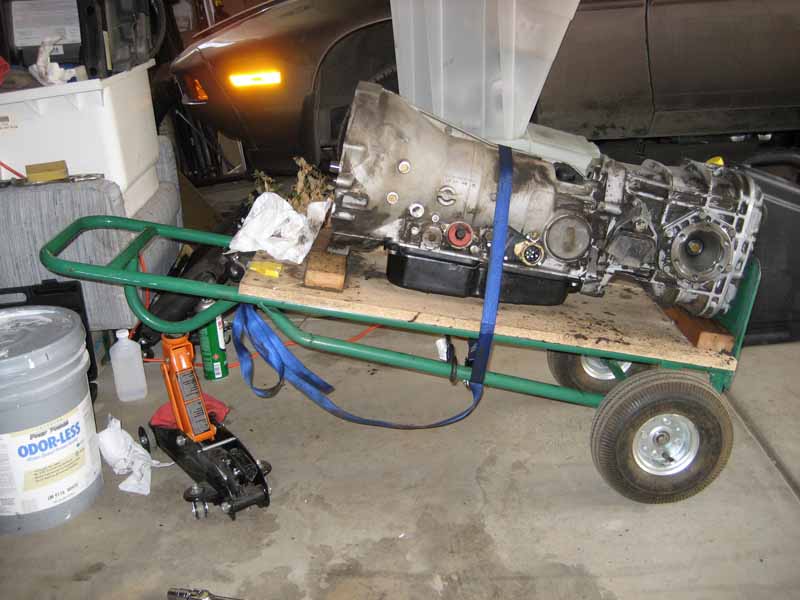
These are the TC input shaft bearings
which I had replaced – I would definitely have a machine shop push out the old
and press in the new. My shop had an oven to make the job smoother and not put
extra pressure on the housing or risk a crack… You also wind up pushing the flex
plate carrier and shaft back in – keep it straight…
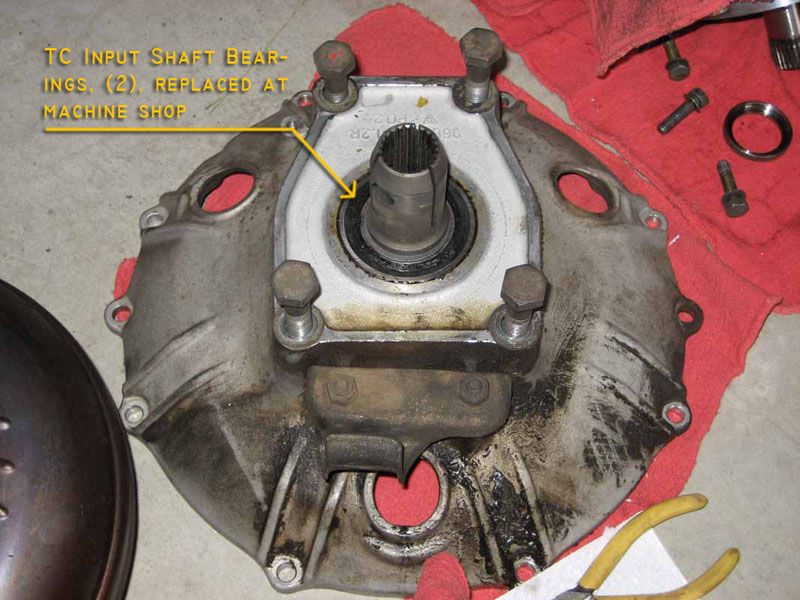
Magical Front Pump (as seen from the front):
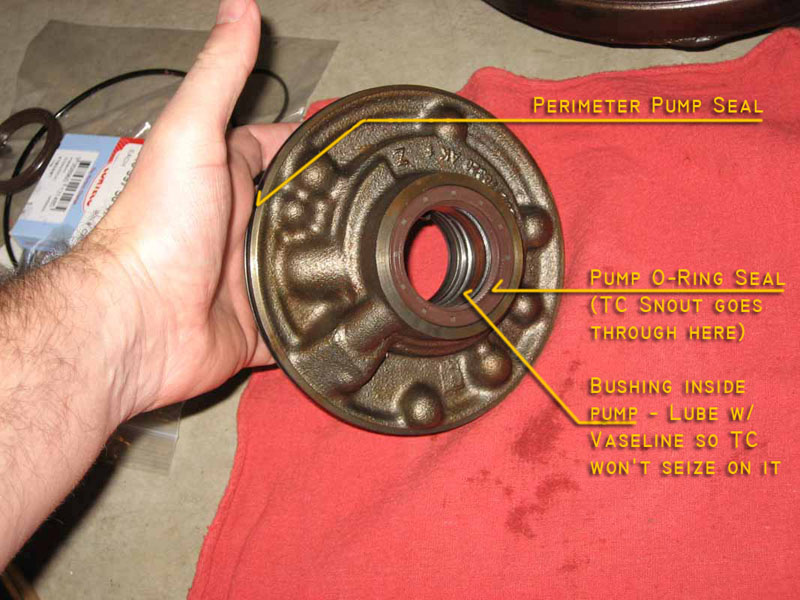
Here’s a picture of how the pump and housing all sandwich together:

Below is the gasket that seals the
interface between the assembly and the housing – this is the gasket that was
damaged in Heinrich’s post:
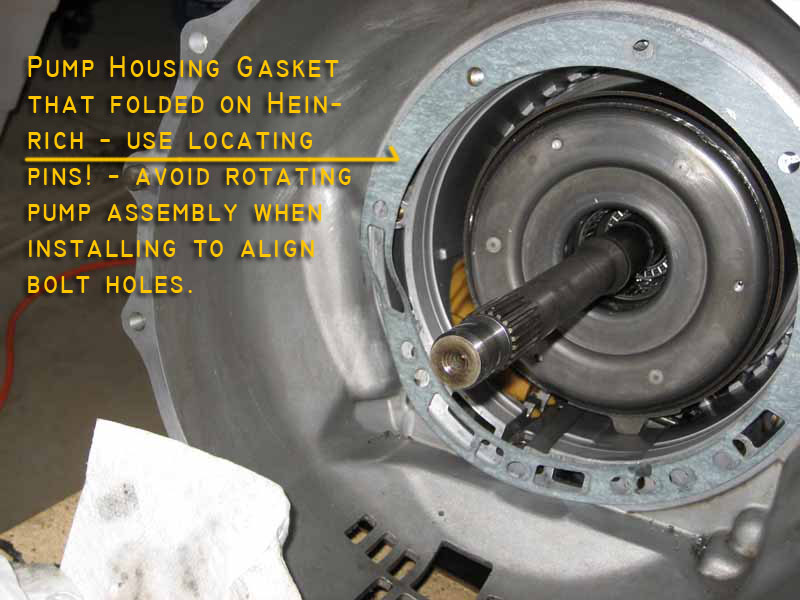
And here’s how they interface (note the
pump and the back piece shown in the following pic are not installed on to the
pump cover in this picture – yours should have that stuff on there!):

If you’ve searched around about this
problem you’ll find that you can’t get to the main pump without removing the
piston mounted to the back. I’m not sure what all this is but I’m sure I put it
back together the way I found it! There are another (2) seals that go on that
shaft as well.

and here's a page from the pet that
shows how this all goes together:
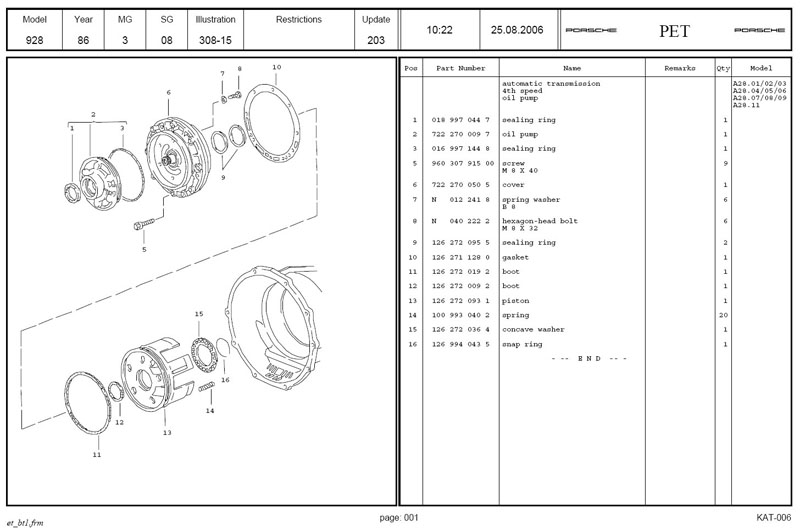
Assembly is the reverse of removal…
(love that one).
I have to say, after doing all of this work, I’m pleased I could turn the key
and didn’t hear some horrible metal mashing sounds, and the car will move under
its own power. Unfortunately, there’s a post operation new symptom: driveline
shuddering when Reverse is selected (it’s so bad I move the selector to Park or
Neutral right away). It starts to shudder when the valve finally opens (or
closes?) and the brake band tries (I think) to take hold. The car would back up
but I’m afraid I’m gonna do some bigger damage…
Helpful hints for this procedure for those seeking the path:
- I did this job w/ those cheapo-short jack stands and (2) 2-ton $30 hydraulic
jacks – it can be done - but next time I’ll go for taller jack stands that
extend about 21”. Porken lift bars would be the bomb! And a floor jack that will
lift to 21-23” would be perfect. This gets the car off the ground far enough to
maneuver most everything including the rear sub-frame out from under the car. I
had to lower the front jack stands and tilt the car forward to get mine out from
the rear – what a bugger!
- Get all that stuff removed in the engine bay (airbox, MAF, cross brace etc.)
as that engine moves a lot. Also, this seems a common time to pinch some of the
hoses and tubing mounted to the firewall (brake line, fuel line, etc.) – another
potential fire hazard if you’re not careful. I made a practice of lowering the
transmission and checked clearance on the firewall just to make sure I didn’t
pinch something.
- Undo the tension on the transmission selector cable by removing the selector
hardware at the transmission or detaching the cable, if you don’t this will
stress the casing as the transmission lowers. New selector cables can be pricey…
And now I’m fully trained (er, I think so…) on transmission fluid level
checking. Researching I’ve found several perspectives on this (checking hot,
warm, and cold), however, after carefully reading the WSM (check it cold!), and
asking other experts, it’s best to do the following:
- Make sure the car is on level ground, parking break on, wheels blocked. You
need to be able to put the transmission in PRND and not let it get away from
you.
- Check the level COLD. Start engine in Park or Neutral and let the main pump
fill up the torque converter, this will take 2 minutes maximum. Check level – it
should be at the lowest mark on the reservoir.
- Put the transmission in Reverse for 15 seconds, in Drive for 15 seconds (to
allow the valves in the AT to open-close and put the car in gear both directions
– this ensures that the fluid is flowing throughout the transmission). Check
level – it should be at the lower mark on the reservoir.
- After these 2 checks, add more fluid if necessary to bring the level up to the
lower mark. You’re done, the upper marks are for “hot” transmissions which will
only happen after you’ve driven the car for 15 minutes and everything is up to
temp. I don’t think you’ll have “hot” fluid if you have the car running at idle
for 30 minutes while you’re checking levels, engaging transmission, filling with
fluid, etc.
- FYI, when the motor turns off and the TC stops spinning, it may drain AT fluid
back in to the lower pan and the reservoir will look completely full – see
picture.
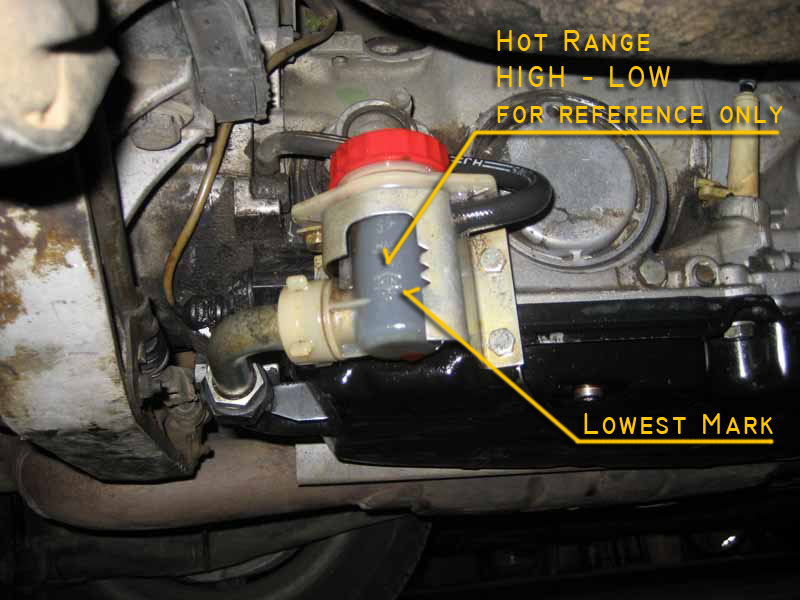
That’s about it. If you’ve read this far you know what’s ahead for me when I can
finally pull up my bootstraps to get it done. My current mantra is: Always
faster the 2nd time! I may have to enlist some local supervision to hopefully
avoid a 3rd … (perish the thought… something about the smell of ATF…)..
to be continued...
-Paul
----------
To align the pump correctly there is an instruction in the WSM.
I made the 'A' mounting pins from two standard long shank metric bolts.
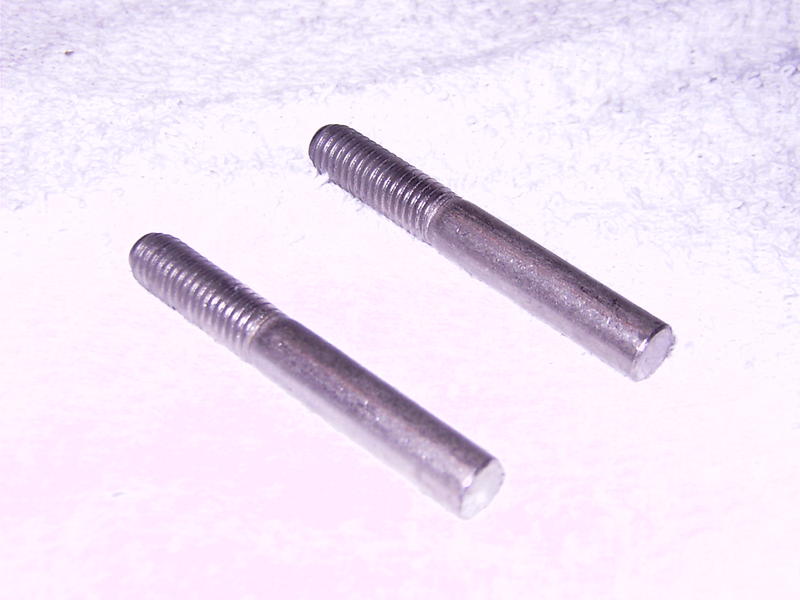

You can also screw two smaller bolts,
finger tight, in the threaded holes, and use them to grab the whole assembly
when making the fit-up.
When the unit is vertical, the pump housing tends to want to drop in place from
your hands, so a better grip is helpful.
Borland
---------